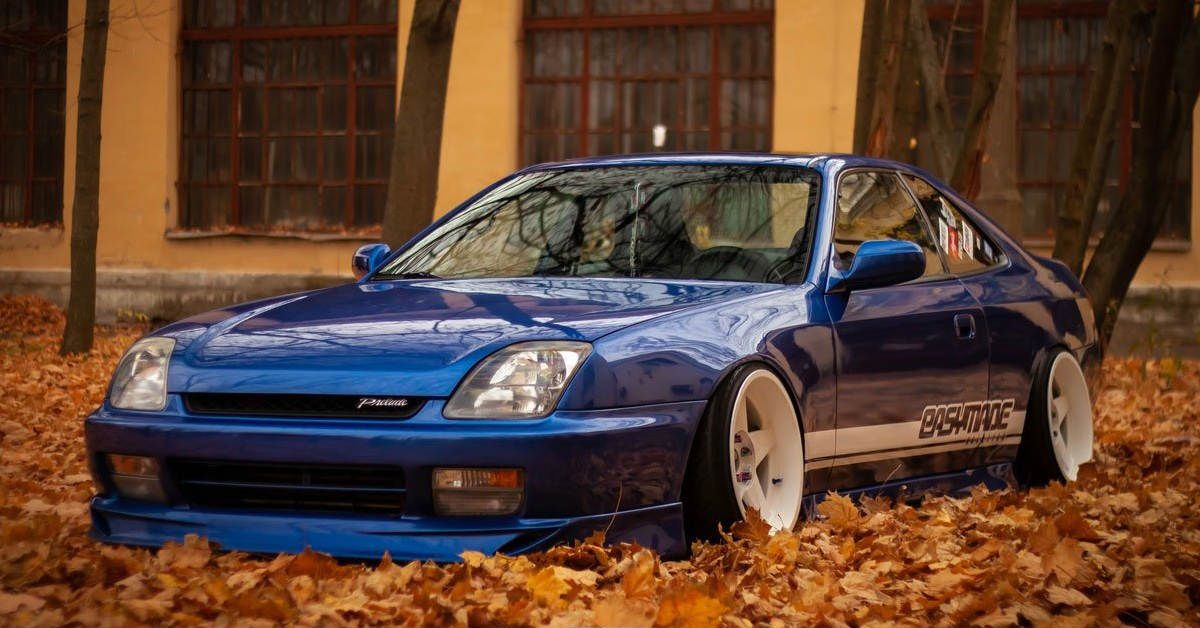If you have been a long-time fan of '90s JDM cars, chances are, at some point in your life, you fancied having the Civic/Integra as a project car. Quite honestly, it's not a bad thing at all. '90s Hondas have a lot of aftermarket support, and are known to be fun machines either on the streets or on the track.
Let's face it, when we talk about tuner Hondas, the NSX, the S2000 and the aforementioned Civic/Integra platform are always the top choice. The Honda Prelude, on the other hand, kind of flew under the radar as its smaller siblings took the spotlight. What people don't know is, the Prelude has got some tricks up its sleeve as well, and here are the things that people forgot about Honda's underrated classic.
8 First Introduced In 1978
A lot of people might have forgotten that Honda originally marketed the Prelude as their flagship sports coupe when it was first revealed in the 1978 on the Japanese market.
Two months later, the Prelude had its world premiere at the 1979 AutoRAI in Amsterdam. It was the first-ever Honda model to have a power moonroof which would later on become a trademark of the Prelude, and was powered by a 1.6-liter SOHC 8-valve inline-four engine with 80 hp.
7 Based On The Accord
When the Prelude was introduced, Honda had a music-themed naming scheme for its cars, joining the Accord, Quintet, Concerto, Jazz, and Ballade in the model list. It shared the same engine and underpinnings with the Accord sedan, but was designed to have a shorter chassis to make it sportier.
Furthermore, the Accord and the Prelude were the first cars that have engine displacements under 2000cc that had power steering as standard. The powertrain and suspension component sharing with the Accord continued all throughout the Prelude's model run.
6 Second Generation
The second-generation Prelude was revealed just four years after the first, and was a totally redesigned model riding on a new platform. Plus, this was the first Prelude to wear pop-up headlamps, which was a trend during the 80s.
At only 2,260 lbs and with the Japanese market 2.0-liter engine producing 160 hp, the second-generation Prelude had low weight and high power compared to its rivals, and boasted nimble handling.
5 Third Generation
In 1988, the third-generation Prelude was revealed, boasting the B20A engine with PGM-FI fuel injection and 16-valve head. Effectively, this generation of the Prelude was the best-performing, as it earned third place in the European Car of the Year award.
It shared the same design cues as that of the NSX sports car, which was revealed two years later in 1990, and was the first mass-market passenger car that had four-wheel steering.
4 Fourth Generation
Honda ditched the boxy frame and pop-up headlights for conventional fixed headlamps and a more rounded body design for the fourth-generation Prelude, which went on sale in 1992. It was the first Prelude with VTEC engine technology, and had the H22A1 DOHC engine with 187 hp and 153 ft-lb of torque.
The fourth-generation Prelude has to be yours truly's personal favorite, as it was one of the first competitive cars you could buy in Gran Turismo 2's career mode. It had decent power, and handled well enough to be able to win the first few races without ever bolting on performance upgrades.
3 Fifth Generation
With sales continuing to decline in the fourth-gen Prelude, Honda went back to the boxier body style for the fifth-generation car for 1996. Featuring a larger body frame and 63/37 weight distribution, the car shifted to a more mature mini grand tourer rather than being a sport compact from its previous generations.
Power-wise, the fifth-generation Prelude had the most powerful engine, with the Japanese domestic market Type S model producing 217 hp from the same H22A powerplant from the previous model.
2 Tech-loaded
Throughout the Prelude's five generations, the car boasted a lot of firsts for a compact car, like the aforementioned power moonroof, four-wheel steering and remote trunk release. In other words, every generation of the Prelude was always loaded with technologically-advanced features designed to improve safety, performance and driving experience.
However, the more luxurious add-ons and creature comforts may have been also the main deciding factor as to why sales of the Prelude declined as it evolved over the years, because it boosted its price tag well beyond the more budget-friendly Hondas of the time.
1 Type SH
The front-wheel-drive coupe's final generation included the Type SH, or Super Handling version of the Prelude. It came with the technologically-advanced Active Torque Transfer System, which directed more of the engine's torque to the outside wheels, designed to counteract the inherent understeer characteristics found on front-wheel drive cars.
Quite simply, ATTS was Honda's version of torque vectoring, or an electronically-controlled limited slip differential, a precursor to the SH-AWD or the Super Handling All-Wheel-Drive tech of the second-generation NSX. This technology helped the Prelude to beat much more expensive cars, especially in slalom courses, and effectively solidified its reputation as one of the sharpest-handling cars during its time.


.jpg)
.jpg)
.jpg)
.jpg)
.jpg)
.jpg)
.jpg)
.jpg)
.jpg)
.jpg)
.jpg)
.jpg)
.jpg)
.jpg)
.jpg)
.jpg)